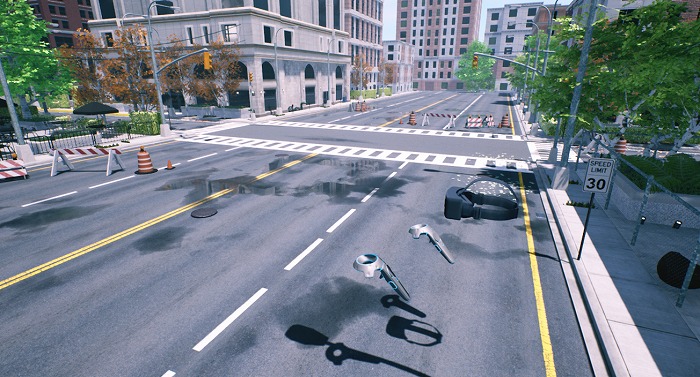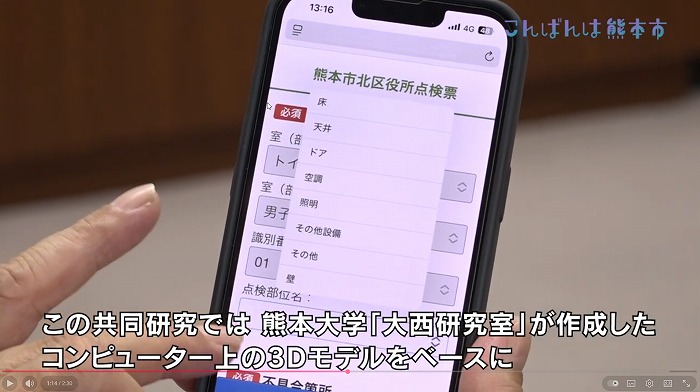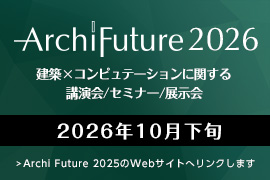![]()
スマートシティを支えるゲームエンジン
2024.02.27
パラメトリック・ボイス
東京大学 ケント・リー
東京大学豊田研究室特任研究員のLee Kentと申します。研究室のメンバーが執筆する連載コラ
ムの第6回を担当します(これまでのパートは次の通り: 第1回、第2回、第3回、第4回、
第5回)。
今回のテーマは、「スマートシティ実現を促進する手段としての『ゲームエンジン』について」
です。
どの都市も、どうすればよりスマートな都市になれるのか、住民に活力を与え、安全で持続可
能で充実した生活を送れるようになるかというビジョンを持っています。その核となる思想は、
スマートシティがダイナミックなリアルタイムのデータを感知し、それに対応することで、市
民がより良い生活を送れるようにする、というものです。ここで、一般的にスマートシティは
ありとあらゆるシステムが連携できる完全で総合的なシステムのように描かれますが、私は、
むしろ特定の社会的ニーズを解決するために的を絞って集中的に実装されるべきだと考えてい
ます。センシングがユビキタスである必要はありません。最初の「スマートシティ」が大々的
にオープンするのではなく、イニシアティブや相互運用可能なシステムが有機的に発展し、近
未来や望ましい未来の可能性を継続的に示していくのです。
上記のようなアプローチをしていくには、対象となるシステムの相互運用性をいかに確保して
いくのかが重要な課題となります。個々のシステムがスマートシティに貢献するためには、国
家レベルの政策立案などによって、より広い範囲をカバーするアプリケーションとの互換性を
確保することが求められます。また、個々のシステムは、共通のインターフェースやプロトコ
ルで開発されなければなりません。しかしながら、システムとスマートシティの間における相
互作用の標準は、まだ定義されていません。
この相互運用性の課題を解決する一つの方法は、都市で感知されているものを一元的に管理す
るハブを持つことです。このハブには、すべてのシステムが「接続」して自身の存在を知らせ
ることができ、共通の合意されたインターフェースを通じてデータを送受信することができま
す。ハブに組み込まれるジオメトリ(幾何学的な情報)はデジタル・ツインに似ていると考え
られますが、全体的な反映を目指すものではありません。私たち豊田研究室は、このハブの基
盤技術として、ゲームエンジンを提案しています。

ゲームエンジンは、ビデオゲームを開発するためのライブラリにアクセスするためのソフト
ウェアフレームワークです。ゲームエンジンは、建築、配信、建設、設計、エンジニアリング
などの産業用アプリケーションに使用されることが増えています。ゲームエンジンのコア機能
の例をいくつか挙げます:
- 2D/3Dオブジェクトのレンダリング
- 物理シミュレーション
- 2D/3Dオブジェクトとのインタラクション
- 外部ライブラリ/ミドルウェアの統合
- プラットフォームにとらわれない開発
トできるかを考えるのは、それほど飛躍的なことではありません。私たちにとって特に興味深
いのは、外部ライブラリの統合とプラットフォームにとらわれない開発ができる点です。何十
年もの間、ビデオゲーム業界は、スマートシティが今直面しているあらゆる種類の課題に対す
る開発と最適化を進めてきました。例えば、多数のエージェント(プレイヤーやNPC)が相互
に接続されたリアルタイムの3D世界のシミュレーション、多数のサーバーインスタンス間での
膨大なデータのアップロードやダウンロード、パスファインディングやアンチチート検出など
の分析、さまざまなプラットフォームへの展開などが挙げられます。ゲームエンジンツール
メーカーは、そのツールの拡張性を理解しており、スマートシティもまた、魅力的なユース
ケースであると言えます。
ゲームエンジンの機能がスマートシティのニーズに直接対応するものではないことは明らかで
すが、物理的な世界をいかに仮想化し、分析し、改善するかを考える上で、その慣習や知恵は
とても重要です。ゲーム業界によって開発されているベストプラクティスは、スマートシティ
の開発方法を考える上で、非常に貴重なものとなるでしょう。併せて、ゲームの世界で実現さ
れている他の楽しいことも仮想化されると良いですね。

以下、上記のコラムを英文でも掲載します。
Game Engines underpinning the Smart City
The University of Tokyo Lee Kent
Hi, I’m Lee Kent, a researcher at the Toyoda Lab at the University of Tokyo. This is
part 6 of a series of columns authored by members of the Toyoda Lab. The previous
lectures can be found in the following: Part 1 , Part 2 , Part 3 , Part 4 and Part 5.
This week's article regards Game Engines, and they could be utilised to facilitate and
support the implementation of Smart Cities.
Every city has a vision of how it can be smarter, how it can empower its citizens and
enable them to have safe, sustainable, and fulfilling lives. At its core, a Smart City
will sense and respond to dynamic real-time data to facilitate better lives for its
citizens. I believe, contrary to how Smart Cities are typically portrayed, the sensing
does not need to be ubiquitous but rather be targeted and focussed to solve specific
societal needs. There will not be a grand opening of the first ‘Smart City’, but an
organic development of initiatives and interoperable systems continually showcasing
the potential of near or preferred futures.
A key challenge with the above disparate approach is interoperability of the targeted
systems. For individual systems to contribute to the Smart City they must be
compatible with applications that have broader scopes, such as national level policy
making. The individual systems must be developed with common interfaces and
protocols, or they cannot claim to be part of a ‘Smart City’ as they are not part of
the digital ecosystem. The codification of the interaction between the systems and
the Smart City is still undefined.
One way this interoperability challenge can be addressed is to have a single
centralised hub of what is being sensed in the city, that all the individual systems
can ‘attach’ themselves to and make their presence known, able to send and receive
data through common and agreed interfaces. With geometry this could be considered
akin to a Digital Twin, without the aspiration of being a holistic reflection. We in the
Toyoda Lab are proposing that Game Engines could be the underpinning technology
that facilitates interoperability within the Smart City.
A Game Engine at its core is a software framework that provides a single point of
access to libraries typically to develop video games. Increasingly, Game Engines are
being used for industrial applications such as Architecture, Broadcasting, Construction,
Design and Engineering. Some examples of core features of a Game Engine are:
- Rendering 2D/3D objects
- Simulating physics
- Interaction with 2D/3D objects
- Integrating external libraries / middleware
- Platform agnostic development
City software architecture, and of particular interest to us are the integration of
external libraries and platform agnostic development. For decades the video games
industry has been developing and optimisation for all kinds of challenges that Smart
Cities are now facing. Examples include simulating real-time 3D worlds with many
interconnected agents (players and NPCs), uploading and downloading huge amounts
of data across many server instances, requiring analysis such as path-finding and
anti-cheat detection, and deployment to a variety of platforms. Game engine tools
makers understand the extending reach of their tools, and Smart Cities is another
compelling use case.
Whilst obviously game engine capabilities are not a direct mapping to the needs of
Smart Cities, the conventions and the wisdom will be invaluable when considering
how to virtualise, analyse, and improve the physical world. The best practices being
developed by the gaming industry may prove invaluable when considering how the
Smart City is developed. Let’s hope that some of the fun also gets translated.
ケント・リー 氏 東京大学生産技術研究所 特任研究員



























